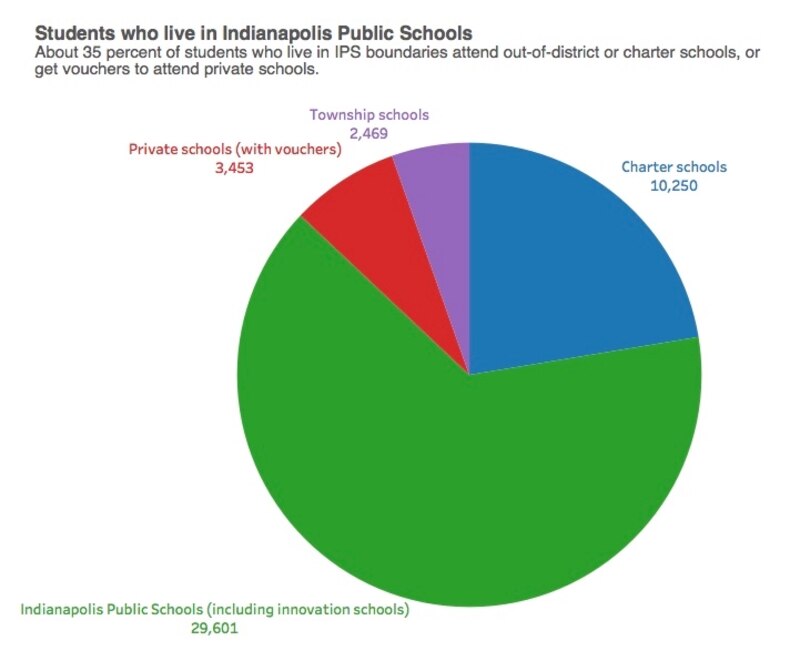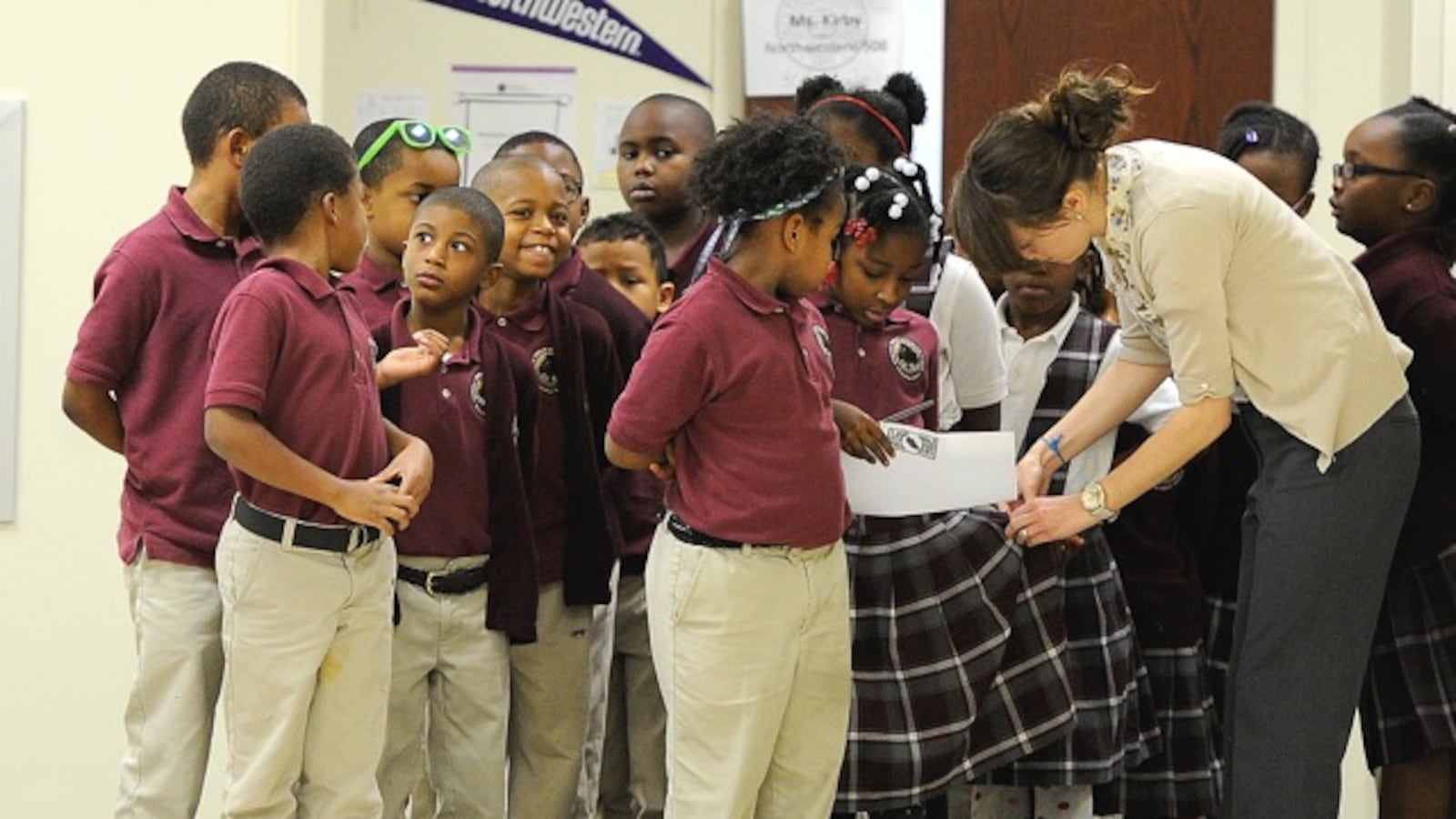When it comes to attracting students, Indianapolis Public Schools faces fierce competition.
Thousands of parents who live in the district choose to enroll their children in charter, township or private schools. The struggle to attract students is the backdrop for changes sweeping the district, including expanding popular magnet programs and moving to close three high schools.
This August, at a heated meeting about the plan to close high schools, Indiana Rep. Ed DeLaney, a Democrat who represents part of the district, pushed IPS Superintendent Lewis Ferebee to talk about how many students the district is losing to charter schools.
When Ferebee didn’t offer a tally, DeLaney continued to prod.
“Are you trying to grow the system, the high school system or not?” DeLaney asked.
As it stands, lots of families are opting out of the system. Last year, about 16,172 students who lived within IPS boundaries attended charter schools, traditional public schools in other districts or private schools with state vouchers, according to data Chalkbeat obtained from the Indiana Department of Education. (Students who attend private schools without receiving vouchers are not tracked by the state.)

In his exchange with Delaney, Ferebee downplayed the importance of competing for students.
“Our mission, our vision is centered around supporting the students that choose IPS,” he said. “If we attract more students to IPS by enhancing the service that we provide to our current students, great, so be it.”
But afterward, Ferebee told Chalkbeat that the district expects the plan to create high school academies — which allow students to choose career and academic focus areas — could attract new students to IPS.
“We see this as an opportunity for our current students but also an opportunity for students that may not be choosing IPS currently,” he said.
The dispute caused a minor stir on social media among critics of the current IPS administration who said it showed that the district wasn’t trying to compete with charter schools.
Superintendents in school districts across the country are grappling with a big question: Whether to compete with other schools for students or to partner with them in an effort to contain acrimony and serve families. Since Ferebee took the helm in 2013, the district has been using both tactics, pushing plans that are meant to attract families while also working closely with charter operators.
The clearest example of the growing comity between the district and charter sector are innovation schools, which are managed by outside charter operators or nonprofits but still considered part of the district. But those schools are also supposed to appeal to more families, ultimately boosting the district’s enrollment.
Even before the era of school choice policies such as charter schools, IPS enrollment had been dwindling for decades. Flight to the suburbs and integration busing, which sent students across the district and from IPS to neighboring township districts, helped shrink the district from nearly 109,000 students at its peak to about 40,000 in 2001, when the state allowed charter schools.
But in more recent years, the flow of students out of the district has been fueled by policy decisions from state lawmakers that have promoted school choice programs touted by national policymakers like U.S. Secretary of Education Betsy DeVos. The legislature has given families state dollars to pay private school tuition. It has made it easier to open charter schools and for students to attend public schools in neighboring districts. Last year, IPS enrolled about 30,000 students.
For some families, school choice has been a boon, giving them the chance to choose schools outside the district without paying tuition. But it has also made it more difficult to sustain the traditional public schools. In part, that’s because the state funding schools receive is based on enrollment, and high schools that were built to house thousands of students now educate hundreds.
IPS has a steep climb when it comes to winning back families who have had bad experiences. Donna Jones pulled her children out of Arlington High School because she thought there was too much fighting. “I want to put them in a peaceful environment,” she said.
Jones didn’t rule out sending her children back to IPS, but about two years ago she enrolled them in Lighthouse East, a charter school where they are happy and getting good grades, she said.
Elementary schools like the Butler lab program and the Center for Inquiry magnets, however, have proven that the district can lure some parents back. When the IPS school board was considering plans to create a second Butler lab campus at an emotional meeting last week, parent Eric Rumschlag said that his family chose IPS because of the Butler lab school.
“We were preparing to send our son to private school when we received word that he had gotten into the lab school,” he said. “Our son has thrived under the lab school’s approach.”

